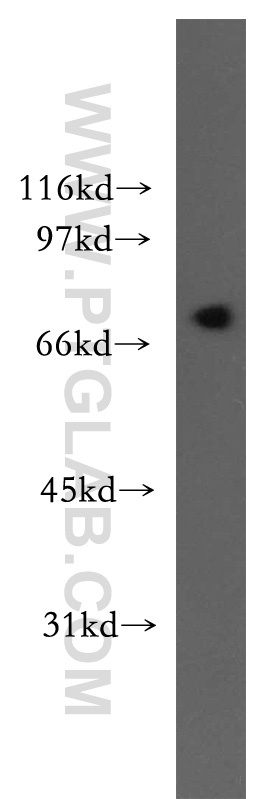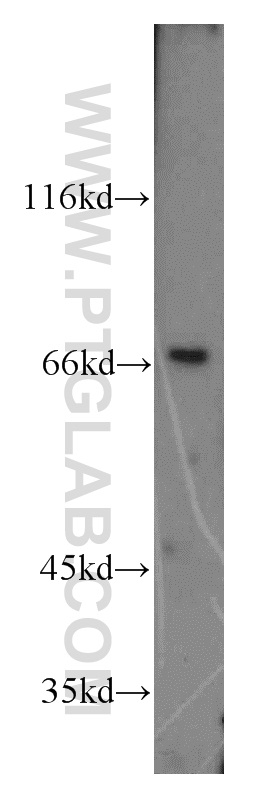验证数据展示
经过测试的应用
| Positive WB detected in | mouse testis tissue, mouse kidney tissue |
推荐稀释比
| 应用 | 推荐稀释比 |
|---|---|
| Western Blot (WB) | WB : 1:500-1:2400 |
| It is recommended that this reagent should be titrated in each testing system to obtain optimal results. | |
| Sample-dependent, Check data in validation data gallery. | |
产品信息
13124-1-AP targets LNX1 in WB, ELISA applications and shows reactivity with human, mouse, rat samples.
| 经测试应用 | WB, ELISA Application Description |
| 经测试反应性 | human, mouse, rat |
| 免疫原 |
CatNo: Ag3823 Product name: Recombinant human LNX1 protein Source: e coli.-derived, PGEX-4T Tag: GST Domain: 378-728 aa of BC022983 Sequence: DSFHVILNKSSPEEQLGIKLVRKVDEPGVFIFNVLDGGVAYRHGQLEENDRVLAINGHDLRYGSPESAAHLIQASERRVHLVVSRQVRQRSPDIFQEAGWNSNGSWSPGPGERSNTPKPLHPTITCHEKVVNIQKDPGESLGMTVAGGASHREWDLPIYVISVEPGGVISRDGRIKTGDILLNVDGVELTEVSRSEAVALLKRTSSSIVLKALEVKEYEPQEDCSSPAALDSNHNMAPPSDWSPSWVMWLELPRCLYNCKDIVLRRNTAGSLGFCIVGGYEEYNGNKPFFIKSIVEGTPAYNDGRIRCGDILLAVNGRSTSGMIHACLARLLKELKGRITLTIVSWPGTFL 种属同源性预测 |
| 宿主/亚型 | Rabbit / IgG |
| 抗体类别 | Polyclonal |
| 产品类型 | Antibody |
| 全称 | ligand of numb-protein X 1 |
| 别名 | ligand of numb protein X 1, LNX, LNX1, MPDZ, Numb binding protein 1, PDZRN2 |
| 计算分子量 | 728 aa, 81 kDa |
| 观测分子量 | 70 kDa |
| GenBank蛋白编号 | BC022983 |
| 基因名称 | LNX1 |
| Gene ID (NCBI) | 84708 |
| RRID | AB_2136987 |
| 偶联类型 | Unconjugated |
| 形式 | Liquid |
| 纯化方式 | Antigen affinity purification |
| UNIPROT ID | Q8TBB1 |
| 储存缓冲液 | PBS with 0.02% sodium azide and 50% glycerol, pH 7.3. |
| 储存条件 | Store at -20°C. Stable for one year after shipment. Aliquoting is unnecessary for -20oC storage. |
背景介绍
LNX1 (Ligand of Numb, protein X 1) was originally identified as a binding partner of the cell-fate determinant Numb and was reported to be involved in ubiquitylation and degradation of Numb. LNX1 contains four PDZ domains and may function as a scaffold for a multi-protein complex. LNX1 has two splicing variants, LNX1p70 and LNX1p80. LNX1p70 has the N-terminal Numb binding region and four PDZ domains, whereas LNX1p80 has an additional RING-finger domain at the N-terminus followed by a Numb-binding region and four PDZ domains. This antibody can detect both LNX1p70 and LNX1p80, around 70-80 kDa and 80-100 kDa, respectively.
实验方案
| Product Specific Protocols | |
|---|---|
| WB protocol for LNX1 antibody 13124-1-AP | Download protocol |
| Standard Protocols | |
|---|---|
| Click here to view our Standard Protocols |



